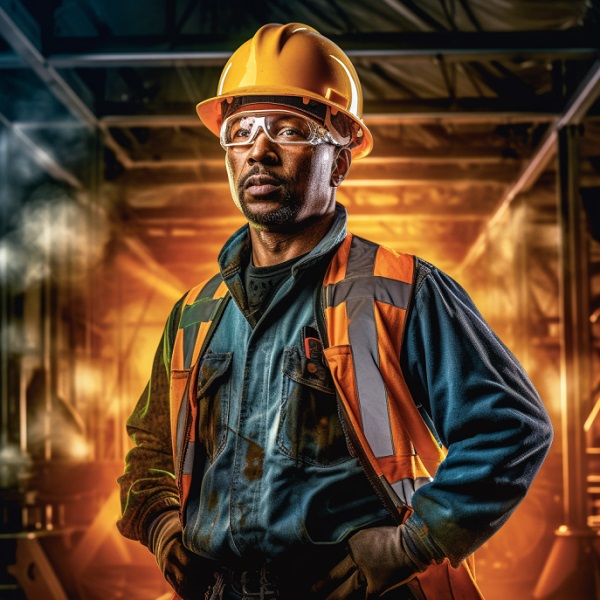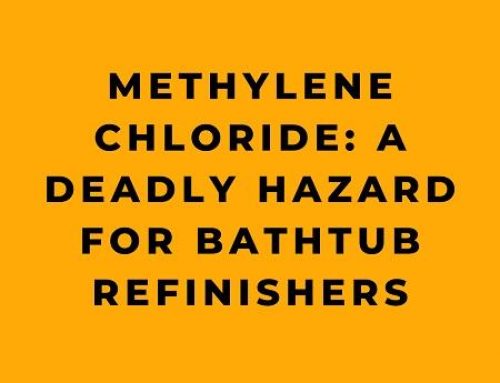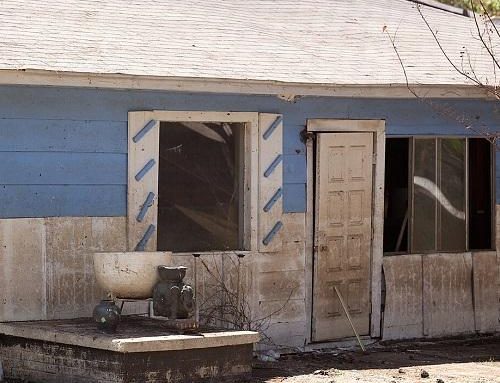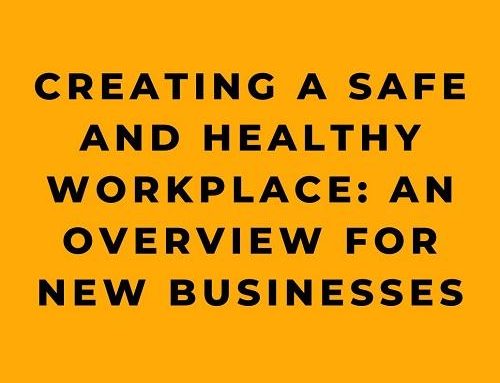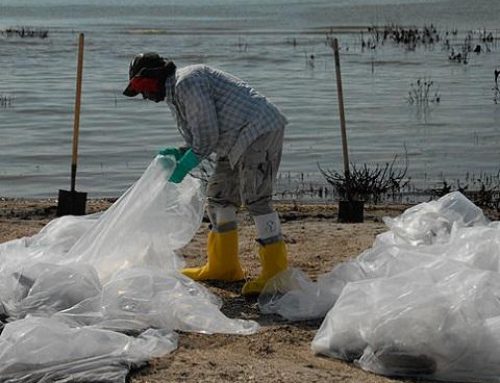Introduction
Well now, if you’re like me, you might enjoy a bit of dirt under your nails, a good day’s work, and the satisfaction that comes from building something with your own two hands. But let’s not fool ourselves, the construction industry, known for its dynamic and often hazardous work environment, requires stringent safety measures to protect its workforce. Among these safety measures, the role of Personal Protective Equipment (PPE) cannot be overstated. PPE serves as the first line of defense against a myriad of potential hazards, protecting construction workers from injuries and health risks.
Now, let’s get real. The construction sector is considered one of the most dangerous fields to work in. According to the U.S. Bureau of Labor Statistics, the construction industry accounted for a staggering 46.1% of all fatal falls, slips, and trips in 2019 and 2020. On average, 15 deaths per day are recorded in the construction industry. That’s right, every day, 15 folks won’t be coming home from the jobsite.
The use of PPE at construction sites is not just a suggestion, it’s mandatory. And for good reason: it’s estimated that proper use of PPE can prevent 37.6% of occupational injuries and diseases. But it’s not enough to just have the equipment. Workers need to actually use it, and use it correctly. In fact, it’s been found that many injuries occur because workers either don’t wear their PPE, or don’t wear it correctly. For example, in 2005, a training program conducted by the Environmental Health & Safety department of NYU reported that hard hats were only worn by 16% of workers who had head injuries, and eye protective equipment was worn by only 40% of the workers with eye injuries.
But we’re not just talking about safety here. There’s also the matter of legal obligations. Employers have a responsibility to provide PPE, train workers in its use, and ensure it is used correctly. So buckle up, and let’s get into the nitty-gritty of PPE in the construction industry. Because as we all know, nothing says ‘I love you’ like a hard hat and a pair of safety goggles.”
Basic PPE
At a minimum, every worker on a construction or renovation site is expected to wear a hard hat and safety glasses. These basic PPE items safeguard workers from the most common injuries – impact from falling or flying objects and exposure to particulate matter that can cause eye injuries.
In addition to these, high visibility safety vests with reflective striping are a must when employees are exposed to vehicular traffic. Even in the absence of vehicular traffic, high visibility shirts should be worn at all times to ensure workers are noticeable in the bustling construction environment. The role of appropriate clothing is pivotal too. All workers are expected to wear shirts with sleeves, long work pants, and sturdy work shoes or boots. Tank tops, shorts, sweatpants, sneakers, sandals, and high-heeled or open-toed shoes are strictly prohibited due to the risks associated with the construction environment.
The use of PPE extends beyond these basic requirements. Depending on the nature of the job and potential hazards, additional PPE may be required. Supervisors, armed with a preliminary Job Hazard Analysis, have the responsibility to determine the need for further protective gear. This could include protective gloves, hearing protection, full face shields, chemical splash goggles, respiratory protection, and even fall protection equipment when working above 6 feet. Workers tasked with welding or working with live electricity may require specific protective clothing such as welding leathers or flame-resistant (FR) clothing.
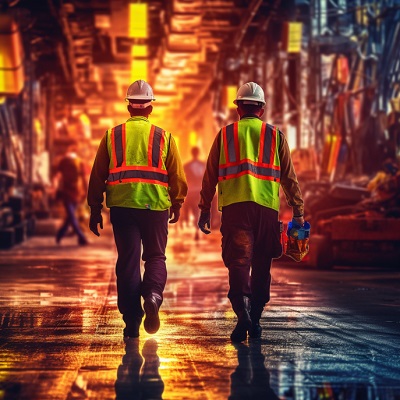
PPE Selection
The selection of appropriate Personal Protective Equipment (PPE) is a critical aspect of ensuring workplace safety. The right PPE can make the difference between a close call and a serious injury. In this process, there are several factors to consider including comfort, fit, durability, and compatibility with other pieces of PPE.
Comfort is a vital factor in PPE selection. If PPE is uncomfortable, workers may be less likely to use it correctly or may remove it prematurely, negating its protective benefits. Comfort also involves ensuring that the PPE does not cause unnecessary strain or interference with the user’s tasks. Therefore, PPE should be chosen with the user’s comfort in mind, considering aspects such as weight, flexibility, and breathability.
Fit is another crucial factor. PPE that does not fit correctly will not provide the intended level of protection. For example, safety glasses that are too loose may not protect the eyes effectively, and a respirator that doesn’t fit properly may not seal against the face, leading to inadequate protection. It is important to ensure that PPE is available in a range of sizes and that each worker has access to equipment that fits them well.
Durability is also an essential consideration, particularly in environments where PPE is likely to face heavy wear and tear. The selected PPE should be robust enough to withstand the demands of the job without compromising its protective qualities. Additionally, understanding the lifespan and maintenance needs of the PPE will assist in making informed choices about its selection and replacement.
Finally, compatibility with other PPE is key. Workers often need to wear more than one piece of protective equipment at a time, and these pieces must work together without hindering each other’s effectiveness. For instance, a hard hat and safety glasses need to fit comfortably together, and a respirator should not interfere with the seal of protective eyewear.
Selecting the right PPE is a process that requires careful consideration of several factors. By focusing on comfort, fit, durability, and compatibility, we can ensure that workers are adequately protected and can perform their duties safely and efficiently.
Hard Hats – The Crucial Role of Hard Hats, The Cornerstone of PPE in Construction
The hard hat is an emblematic piece of personal protective equipment (PPE) in various industries, most notably in construction.
The importance of hard hats cannot be overstated, but understanding which one is suitable for the job often gets overlooked. As a result, workers might remove them due to discomfort, heat, or even complacency, putting themselves at a higher risk of head injury.
Types and Classes of Hard Hats
Hard hats come in different types and classes, each designed to cater to specific working conditions. There are two primary physical protection classes: Type I and Type II, and three electrical protection classes: Class E, Class G, and Class C. These classes and types are standardized by the American National Standards Institute (ANSI), an organization that oversees the development of consensus standards in the United States, under Standard for Head Protection Z89.1.
Type I hard hats are designed to protect the top of the head from falling hazards. They typically feature a full brim and are suitable for overhead maintenance work or confined space entry where work is predominantly stationary.
Type II hard hats offer protection to both the sides and top of the head from falling hazards and side impacts, making them apt for construction and high-mobility work.
For those working in environments with exposure to electricity, Class E hard hats offer electrical protection up to 20,000 volts, and Class G hard hats provide protection up to 2,200 volts. Class C hard hats, on the other hand, do not provide electrical protection but offer ventilation.
Hard Hat Maintenance
Just as important as selecting the correct hard hat is its upkeep. Hard hats have an expiration date and must be replaced once this date has passed. They should also be kept free of debris, sun damage, cracks, and any other conditions that might compromise their protective capabilities. A significant impact, even if no visible damage is evident, should necessitate a hard hat’s replacement, as there could be unseen structural damage that severely reduces its protective capabilities.
When are Hard Hats Required?
According to the Occupational Safety and Health Association (OSHA), a US agency responsible for ensuring safe and healthy working conditions, hard hats are required when there is a perceivable risk of head injury. This could be from falling objects, stationary objects at head level that may be walked into, or potential contact with electrically charged materials. OSHA requires hard hats for “affected employees,” defined as any employee at risk of head injury due to these conditions. This includes carpenters, mechanics, laborers, warehouse laborers, stock handlers, loggers, among many others.
The Consequences of Not Wearing Hard Hats
Not wearing a hard hat can lead to severe consequences. Every year, there are approximately 65,000 cases of lost time due to head injuries in the workplace, and about 1,000 workers die from sustained head injuries. Head injuries can range from minor cuts and bruises to major issues such as concussions, traumatic brain injuries, skull penetration, and neck and spinal injuries. Additionally, our brains are more susceptible to rotational forces rather than head-on forces; hence, the construction industry is focusing more on protecting workers against these rotational forces.
Protective Gloves
A closer look at some of these additional PPE items can help us appreciate their importance in ensuring worker safety. Let’s start with protective gloves. Potential hazards to hands and arms in a construction site are many – skin absorption of harmful substances, chemical or thermal burns, electrical dangers, bruises, abrasions, cuts, punctures, fractures or amputations. To safeguard against these, protective gloves, finger guards, and arm coverings are used, with the type of glove being determined by the nature of the task at hand.
Protective gloves come in a variety of materials and designs to address different hazards. Leather, Canvas, or Metal Mesh gloves are typically used to protect against cuts, burns, and punctures. Fabric and Coated Fabric gloves, made of cotton or other fabrics, protect against dirt, chafing, and abrasions. Insulating rubber gloves serve as protection against electrical hazards. Lastly, when dealing with corrosive materials or harmful chemicals, Chemical and liquid resistant gloves are a necessity.
Choosing the right glove is not a trivial task, however. Several factors beyond the glove material itself influence the selection process. For instance, the amount of dexterity needed to perform a specific task must be balanced against the glove material’s chemical resistance. In some cases, a bulky glove could pose more of a hazard, especially when handling delicate objects where fine dexterity is crucial. Other considerations include glove thickness, length, size, color, cuff design, and even lining for some tasks.
To ensure their efficacy, all gloves should be inspected before use. Regular washing and care are necessary for reusable gloves, and disposable gloves should be changed immediately upon signs of contamination. It’s also important to handle gloves properly to avoid inadvertent contamination of other surfaces or objects.
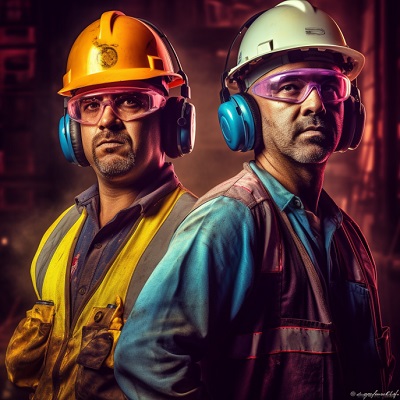
Hearing Protection
Another critical part of PPE is hearing protection. Construction sites are typically noisy, and prolonged exposure to high noise levels can lead to hearing damage. When it’s not possible to reduce noise exposure to safe levels, hearing protection becomes a necessity. There are several types of hearing protection devices available, including ear plugs, ear muffs, and hearing bands. Each should be carefully selected for the noise reduction they provide, as well as for comfort and fit.
Pre-molded Ear Plugs, Formable or Foam Ear Plugs, Ear Muffs, and Hearing Bands or Canal Caps are among the common hearing protection devices. Pre-molded Ear Plugs come in different sizes and shapes to fit different-sized ear canals. Formable or Foam Ear Plugs expand to fill and seal the ear canal, making them suitable for different ear sizes. Ear Muffs fit against the head and enclose the entire perimeter of the external ear, providing noise reduction through acoustic foam. Hearing Bands or Canal Caps cover the ear canal at its opening but generally provide less protection than ear muffs or plugs and are thus not typically recommended.
Protecting the eyes and face is another essential aspect of PPE in construction. The selected eye and face protection should be capable of safeguarding against specific workplace hazards. It should fit properly, be comfortable to wear, provide unrestricted vision and movement, and be durable and cleanable. It should also not restrict the functioning of any other required PPE. The American National Standards Institute (ANSI) standard Z87.1-1989 or later must be complied with for eye and face protection3.
Common types of eye and face protection include Safety Glasses, Chemical Splash Goggles, Dust Goggles, Fluid Resistant Shields, Face Shields, Laser Eyewear, and Welding Shields. Safety Glasses have safety frames and impact-resistant lenses. Chemical Splash Goggles provide protection from impact, dust, and splashes. Fluid Resistant Shields offer splash protection from biological material. Face Shields protect against potential splashes or sprays of hazardous liquids. Laser Eyewear is required for specific laser use. Welding Shields protect eyes from burns caused by infrared or intense radiant light and protect both the eyes and the face from flying sparks, metal splatter, and slag chips produced during welding, brazing, soldering, and cutting operations.
Respiratory Protection
In the gritty, dust-filled world of construction, one can’t underestimate the importance of respiratory protection. The air can often be thick with harmful dusts, fogs, smokes, mists, gases, vapors, and sprays, which, without the right protection, can lead to serious respiratory ailments. This is where respirators step into the picture.
Respirators are designed to protect workers against these airborne hazards. They come in various shapes and sizes, each tailored to filter out specific types of airborne particles. From simple dust masks, often used to filter out non-toxic nuisance particles, to the more robust half or full-face respirators equipped with cartridge filters designed to purify the air of more dangerous substances like asbestos or lead, respirators play a key role in maintaining the health and safety of workers on the job site.
However, it’s not enough just to don a respirator. Proper fit is crucial. A poorly fitting respirator can allow hazardous substances to bypass the filter mechanism and be inhaled by the user. That’s why OSHA regulations mandate that all workers required to wear a respirator must be fit-tested annually to ensure the equipment provides a secure seal against the face.
Moreover, workers need to be properly trained in the use of these devices. This includes understanding when to use them, how to put them on and take them off, and how to maintain them. After all, a respirator can only do its job if it’s used correctly.
Fall Protection, Ensuring Safety at Heights
Fall protection in the construction industry is not just a regulatory requirement but a moral obligation to ensure the safety of workers. This comprehensive guide will delve into the variety of systems available for providing effective fall protection, including guardrails, personal fall arresting systems, positioning device systems, safety monitoring by competent persons, warning line systems, covers, and safety net systems.
Guardrails
Standard guardrails are a crucial fall protection measure, comprising a top rail situated 42 inches above the floor and a mid-rail. In certain scenarios, screens or mesh can substitute the mid-rail, provided they extend from the top rail to the floor. The top-rail height for construction should be between 39 to 45 inches, while mid-rails should be at 21 inches. These rails are designed to withstand considerable force, with top-rails enduring 200 lbs. of outward or downward force and mid-rails withstanding a force of 150 lbs. It’s crucial to note that the use of steel or plastic banding for a top-rail is strictly prohibited. When wire rope is used for perimeter protection, it must be flagged every six feet and be at least 3/8 inch in nominal diameter.
Personal Fall Arresting Systems
Personal Fall Arresting Systems (PFAS), which are devices designed to safely stop a fall in progress, play a significant role in fall protection. Workers must always use full-body harnesses as part of PFAS. These systems limit the maximum arresting force on a worker to 1,800 lbs. They must be rigged such that a worker can’t free fall more than six feet (or four feet in California, as per the state’s regulations) or contact any lower level. Snap hooks and D-rings should have a minimum tensile strength of 5,000 lbs., and only locking-type snap hooks should be used to prevent rollout. Lifelines should be designed and installed under the supervision of a qualified person as part of a complete personal fall arrest system, maintaining a safety factor of at least two. They should also be protected against being cut or abraded.
Positioning Device Systems
Positioning device systems, consisting of a body belt or harness, allow workers to work on vertical surfaces like walls with both hands free. These systems are pivotal for tasks that require precise control and positioning.
Safety Monitoring by a Competent Person
Safety monitoring systems are essential for fall protection. These systems involve a competent person—a person capable of identifying existing and predictable hazards in the working conditions and who has the authorization to take corrective measures—monitoring workers on elevated surfaces
PPE plays a crucial role in ensuring the safety and well-being of workers in the construction industry. The appropriate use and care of PPE can significantly reduce the risk of injuries and health issues, making it an indispensable part of any construction or renovation site. The selection and use of PPE should be based on a comprehensive understanding of the potential hazards at the workplace and the protective capabilities of various PPE options. Remember, the goal of PPE is not just to comply with regulations but to create a safer and healthier work environment.
Training in the Use of PPE
Training is an integral component of Personal Protective Equipment (PPE) use. It is not enough for employees to merely have access to the appropriate PPE; they must also understand when and how to use each piece of equipment, and how to maintain and inspect it. This applies to all types of PPE, from hard hats to safety harnesses, and from respirators to earplugs.
Every workplace should have a comprehensive PPE training program in place. This program should include theoretical instruction, practical demonstrations, and hands-on practice, ensuring that all workers are comfortable with the use of each piece of PPE relevant to their job. The training should cover the correct way to wear the equipment, the situations in which it should be used, and the potential hazards that the equipment is designed to protect against. Moreover, the training should instruct workers on how to inspect their PPE for any signs of wear and tear, and how to properly clean and store their equipment to maintain its effectiveness.
Importantly, this is not a one-time effort. Regular refresher courses should be scheduled to remind employees of the importance of PPE and to keep their knowledge and skills up to date. Training should also be updated and provided whenever new equipment is introduced or when the nature of the work or work environment changes. This continuous training not only helps to maintain a high level of safety awareness among the workforce, but also promotes a culture of safety within the organization. After all, the ultimate goal of PPE is to protect workers from hazards, and this protection is most effective when the workers themselves are active participants in their own safety.
Conclusion
The importance of Personal Protective Equipment (PPE) in the workplace cannot be overstated. PPE serves as a crucial shield between workers and potential hazards, whether they be physical, chemical, or biological. It encompasses a wide range of equipment, from gloves and goggles to respirators and hard hats, each designed to protect a specific part of the body. The effective use of PPE requires not only access to appropriate equipment but also comprehensive training for workers on when and how to use, maintain, and inspect each piece of equipment.
However, it is crucial to remember that PPE is the last line of defense in the hierarchy of hazard controls. This means that while PPE plays a vital role in keeping workers safe, it should not be the first or only measure in place. Ideally, hazards should be eliminated or reduced through other means such as engineering or administrative controls before resorting to the use of PPE. For instance, noisy machinery could be replaced with quieter models, or work schedules could be adjusted to reduce the duration of exposure to hazardous noise levels, before requiring workers to use hearing protection.
The limitations of PPE should not be taken lightly. PPE cannot completely eliminate the risk of exposure to workplace hazards. Moreover, if used improperly, PPE might even create additional hazards. For example, a respirator that is not fitted correctly may not provide full protection, and a safety harness worn incorrectly can increase the risk of injury rather than reducing it. Therefore, PPE should be considered a supplementary form of protection, supporting other hazard control methods.
While PPE is an essential component of workplace safety, it is not a solution in itself. It is just one part of a comprehensive approach to workplace safety that should also include hazard identification, risk assessment, and the implementation of appropriate control measures. The goal should always be to create a safe work environment where the need for PPE is minimized, and where workers are well-trained and aware of the importance of their role in maintaining their own safety.
We understand the limitations of PPE, and we wholeheartedly agree that it’s not the silver bullet for workplace safety. It’s true; PPE alone can’t eliminate all risk, and when improperly used, may even contribute to additional hazards. This makes it clear that the role of PPE goes beyond just wearing it — it involves a deep understanding of its proper use, and that’s where we step in.
Now, imagine a world where PPE is used as an effective part of a comprehensive safety plan, where every construction worker is not just equipped but also well-versed in the dynamics of their protective gear. Imagine reducing those shocking injury statistics because every worker on the job site knows their role in maintaining their own safety and does it well. Sounds like a dream, doesn’t it? Well, it’s time to turn this dream into a reality!
Step into the world of safety where your well-being is our topmost priority! Each year, too many lives are lost and countless injuries occur in construction job sites. Yet, the astonishing truth is that the majority of these unfortunate events could have been avoided with the right use of Personal Protective Equipment (PPE). So, let’s change the narrative! To help you navigate the challenging terrain of construction sites, the Occupational Safety and Health Administration (OSHA) mandates employers to provide and maintain cutting-edge PPE. But we understand that simply having the equipment isn’t enough – knowing how to use it is key.
That’s why we’ve developed our industry-leading “Personal Protective Equipment in Construction Environments” training suite. Tailored specifically to meet OSHA’s rigorous standards, our training products empower you with the necessary information to avert accidents and ensure safety at your job site. Delve into our all-inclusive product range that includes the innovative “Micro-Learning” platform, comprehensive online courses, interactive DVDs and CDs. Each resource is designed meticulously, covering essential topics that foster a thorough understanding of safety issues. From an overview of OSHA regulations involving PPE to specifics like personal fall protection, head, eye, face, respiratory, hand, foot, and leg protection – we’ve got you covered.
What’s more? Our “Personal Protective Equipment” products are conveniently available in both English and Spanish, catering to a wider audience. We also offer an easily digestible MicroLearning curriculum, featuring focused 3-5 minute courses that include “General Requirements”, “Head Protection”, “Eye and Face Protection”, “Respiratory Protection”, “Hand Protection”, “Foot and Leg Protection”, and “Personal Fall Protection”. Embrace the power of knowledge and step into a safer tomorrow. Try our “Personal Protective Equipment in Construction Environments” training suite and elevate your safety standards. Because at the end of the day, your safety is our victory. Don’t wait for an accident to happen, invest in your safety today!
References:


